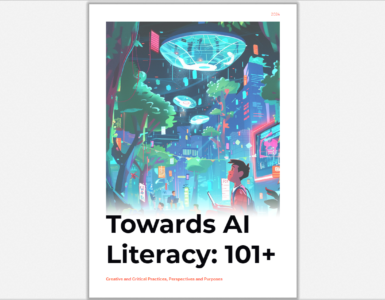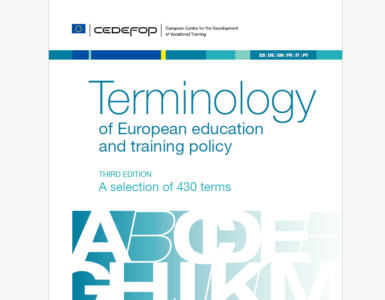by Maria Gkountouma, European Commission.
Nowadays, Artificial Intelligence (AI) systems have become part of our everyday lives. But, their rapid development and the use of associated data has highlighted tensions in many areas of our societies. This is particularly the case for the individualisation of learning (such as better-focused content and curricula), privacy (such as the pervasive storage of data about learners), and equity (such as the interplay between algorithms and data quality) in the field of education. So, as AI continues to evolve and the use of data increases, it is crucial to develop a better understanding of the impact it is having on the world around us.
The Digital Education Action Plan 2021-2027 presents the European Commission’s strategic view on addressing the long-term digital transformation of education and training systems. Under the first priority of the Action Plan, the Commission proposes a set of actions to foster the development of a high-performing digital education ecosystem. This includes a specific action to address the ethical implications and challenges of using artificial intelligence and data in education and training.
The ethics of AI and data and the ethics of education and training are deeply interrelated. As a technology, AI brings its own ethical dilemmas and challenges, but these must be interpreted in the context of teaching and learning to realise the imagined possibilities. In this context, in October 2022, the European Commission published the Ethical guidelines on the use of AI and data in teaching and learning for educators in order to foster an understanding of how AI and data can be used in teaching and learning. They include a definition of AI in education and define its education purposes and how educational challenges can be tackled through it. Of course, ethical considerations are also taken into account along with requirements on how to use AI and data critically and effectively at school. Lastly, the guidelines provide guiding examples to enable a constructive dialogue on AI systems’ ethical use in education and training, and develop emerging competences for confident and relevant use of AI resources and tools.
The guidelines target teachers and educational staff in formal education, mainly in primary and secondary education, with some or no prior experience on using AI and data in teaching and learning. In addition, they can also inform the broader educative community (students and parents, policymakers), as well as all the stakeholders involved in digital education.
The guidelines identify four categories of AI and data use in education: 1) teacher support, 2) student teaching, 3) student support and 4) system support. In fact, AI can support teachers in tasks such as summative writing assessment, essay scoring, student forum monitoring, pedagogical resource identification as well as become a teaching assistant itself. An AI system, such as language learning applications, dialogue-based tutoring systems or intelligent tutoring systems, can also teach students. Students can use AI when they learn via exploratory or collaborative methods, or during their formative writing assessment. Finally, AI can be embedded in systems that perform educational data mining for resource allocation, diagnose learning difficulties or provide career guidance services.
When using AI and data in education, in any of these ways, some key considerations underpinning the ethical use of these systems should be taken into account: human agency, fairness, humanity and justified choice. In fact, these considerations are based on the AI HLEG Ethics Guidelines for Trustworthy AI that talk about a list for self-assessment guided by the principles of human agency and oversight, transparency, diversity, non-discrimination and fairness, societal and environmental well-being, privacy and data governance, technical robustness and safety and accountability.
The guidelines can assist interest parties when planning the use of AI and data in schools and in raising awareness and engaging the community. They are available in all EU languages and an executive summary, an infographic, a factsheet and a video with subtitles accompany them.

Author
Maria Gkountouma is EU Policy Assistant, DG EAC, European Commission














